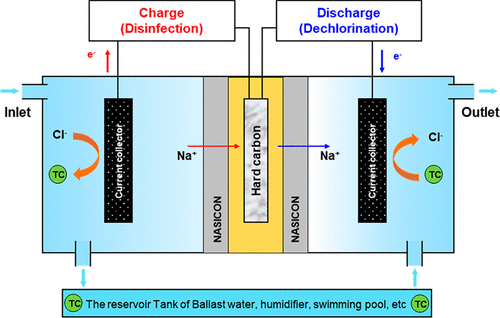Disinfection-Dechlorination Battery for Safe Water Production
- Journal
- ACS ES&T Water
- Vol
- 1
- Page
- 2146-2154
- Year
- 2021
With increasing population growth, it is necessary to meet safe water demands. Water disinfection through chlorination is the most commonly used method for safe water production. The electrolysis of salted water is a promising technology for the on-site generation of disinfecting agents, however, its low efficiency and inability to neutralize the remaining free chlorine makes electrolysis inefficient. The introduction of a cation permeable membrane between anode and cathode can help to improve the disinfection efficiency and also dechlorinate the remained free chlorine by switching the anode and cathode. However, the scale formation on the membrane will reduce the performance of the system. In this study, with using a Na-selective membrane for separating anode and cathode, we propose a disinfection-dechlorination battery (DD-battery) consisting of an anode for energy storage through Na+ reduction to metal Na and a cathode for disinfection via Cl– oxidation to free chlorine species. The stored energy in the anode is released during discharge, and the system can dechlorinate the remaining free chlorine to prevent disinfectant toxicity. This self-disinfection-dechlorination during battery cycling can be combined with renewable energy sources for efficient water disinfection in remote regions.

